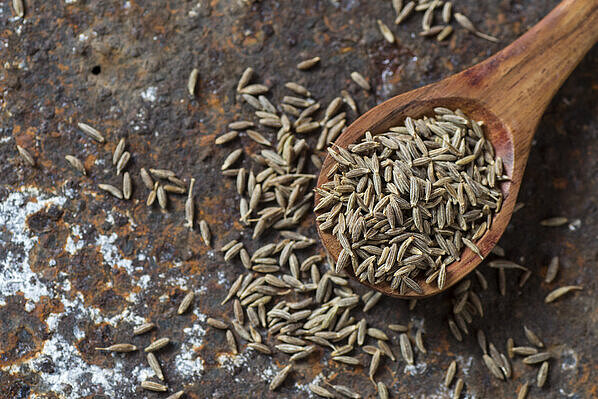Turmeric

Turmeric is a yellow root that is mainly used as a spice in Indian cuisine. But did you know that turmeric can also be healthy for dogs? In this article, you'll find out what turmeric is, what benefits and disadvantages it has for your dog and how to use it correctly.
What is turmeric?
Turmeric belongs to the ginger family and grows in South Asia. The root is dried and ground to obtain the familiar yellow powder. Turmeric contains an active ingredient called curcumin, which is known for its anti-inflammatory, antioxidant and antibacterial properties. Curcumin can help with various ailments such as arthritis, gastrointestinal problems or skin conditions.
What are the benefits of turmeric for dogs?
Turmeric can help your dog in various ways. Here are some examples:
- Turmeric can protect your dog's joints and relieve pain. If your dog suffers from arthritis or is getting older, turmeric can reduce inflammation and improve mobility.
- Turmeric can improve your dog's digestion and prevent bloating and diarrhea. Turmeric stimulates the production of bile, which supports the digestion of fat. Turmeric is also effective against bacteria and fungi in the intestines that can cause infections.
- Turmeric can strengthen the dog's immune system and protect it from disease. Turmeric has an antioxidant effect that protects the cells from free radicals. Free radicals are harmful molecules that are caused by environmental factors or stress and can lead to cell damage or cancer.
- Turmeric can nourish and heal your dog's skin and coat. Turmeric has an antibacterial and antiseptic effect that helps wounds heal faster. Turmeric can also relieve itching or dandruff caused by allergies or parasites.
What side effects does turmeric have for dogs?
Turmeric is generally well tolerated by dogs, but there are some things to be aware of:
- Turmeric can affect blood clotting. If your dog is on blood-thinning medication or is about to have surgery, you should speak to your vet before giving them turmeric.
- Turmeric can lower blood sugar. If your dog has diabetes or is dependent on insulin, you should also speak to your vet before giving them turmeric.
- Turmeric can cause stomach problems. If your dog is sensitive to new foods or has a sensitive stomach, you should only give him small amounts of turmeric and observe how he reacts to it.
How do I use turmeric correctly?
There are various ways to feed turmeric to your dog. Here are some tips:
- You can simply sprinkle some turmeric powder over your dog's food or mix it with some water. The recommended dosage is about a quarter of a teaspoon per 5 kilograms of body weight per day.
- You can also make your dog a special paste from turmeric powder, water, coconut oil and black pepper. This paste is called Golden Paste and is said to improve the absorption of curcumin. You can keep it in the fridge and give it to your dog every day. The recommended dosage is about half a teaspoon per 5 kg of body weight per day.
- You can also buy your dog ready-made products containing turmeric, for example capsules, tablets or treats. Pay attention to the quality and ingredients of the products and follow the manufacturer's instructions.
Turmeric is a natural and healthy ingredient for your dog that can have many health benefits. However, you should always be careful and observe the correct dosage. If you are unsure or your dog has health problems, you should always ask your vet for advice before giving them turmeric.
If you notice any signs of hypersensitivity or poisoning in your dog, you should see your vet immediately. We are not a substitute for a vet, but we try to be as accurate as possible. Every dog reacts differently and we recommend you get a second opinion or consult your vet if in doubt.
Stay healthy and take good care of your four-legged friend!😊
Similar to Turmeric
Ginger is a plant from the ginger family. The root tuber is used as a spice or medicine. It has a pungent taste and a spicy smell. Ginger contains many valuable ingredients, such as gingerol, which...
Before we analyze the effects of saffron on dogs, it is important to understand what saffron actually is. Saffron is obtained from the dried stigmas of the crocus flower Crocus sativus. Up to...
Peppers are a plant from the nightshade family, which also includes tomatoes, potatoes and eggplants. There are different varieties of peppers, which vary in shape, color and heat. The best known...
Cumin is an annual plant that grows up to 50 cm high. It has finely pinnate leaves and small white or pink flowers that are arranged in umbels. The fruits are elongated seeds with fine bristles that...



